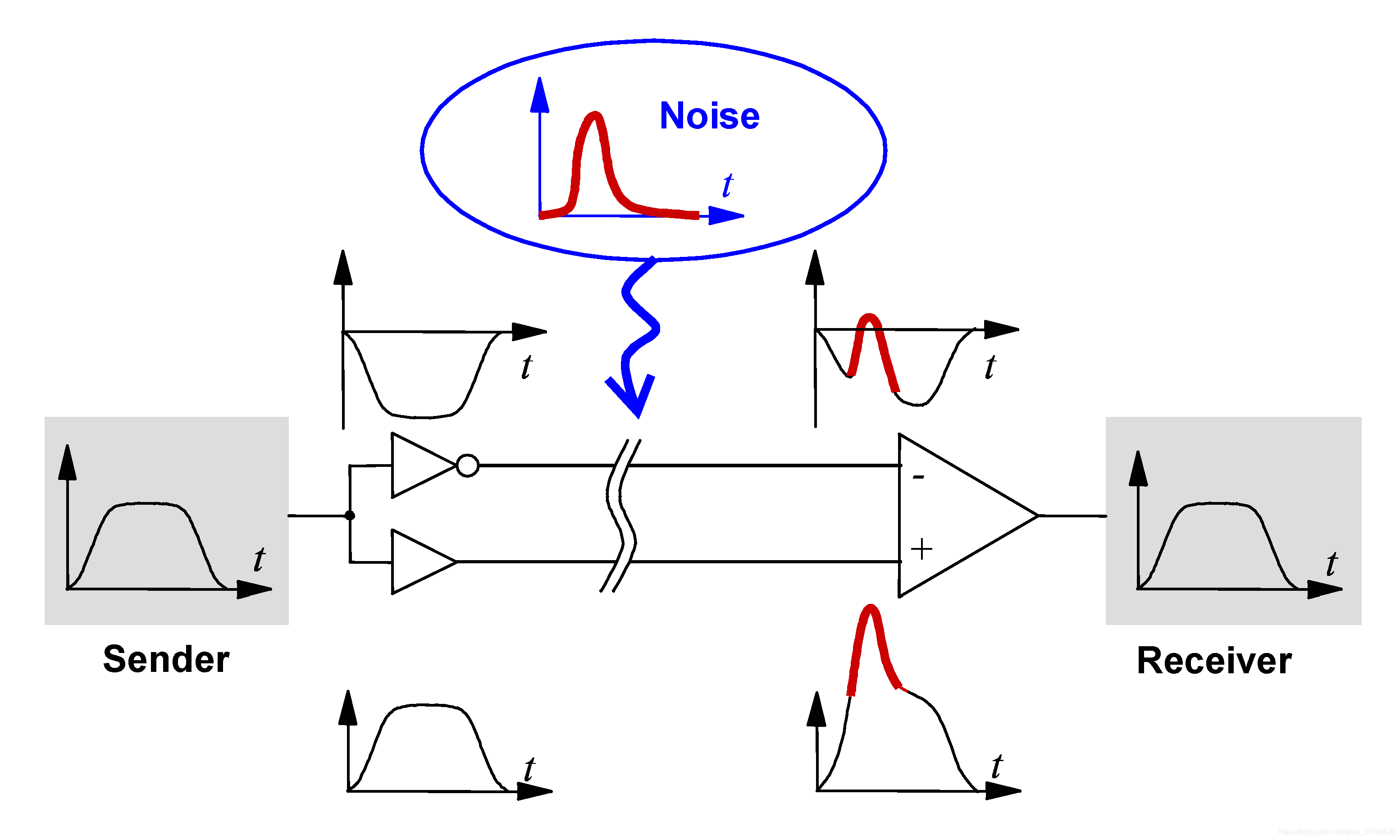Altera FPGA 差分信号初识(1)
Differential Signaling
以下介绍来源于维基百科Differential Signaling:
Introduction
Differential signaling is a method for electrically transmitting information using two complementary signals. The technique sends the same electrical signal as a differential pair of signals, each in its own conductor. The pair of conductors can be wires (typically twisted together) or traces on a circuit board. The receiving circuit responds to the electrical difference between the two signals, rather than the difference between a single wire and ground.
The opposite technique is called single-ended signaling. Differential pairs are usually found on printed circuit boards, in twisted-pairand ribbon cables, and in connectors.
谷歌翻译: 差分信令 是使用两个互补信号电传输信息的方法。该技术发送与差分信号对相同的电信号,每个信号都在其自己的导体中。这对导体可以是电路板上的导线(通常是绞合在一起)或迹线。接收电路响应两个信号之间的电差,而不是单个线和地之间的差异。
相反的技术称为单端信令。差分对通常存在于印刷电路板上,双绞线和带状电缆中,以及连接器。
Advantages
如果差分信号电路中的源和接收器阻抗相等,则外部电磁干扰往往会同样影响两个导体。
由于接收电路仅检测导线之间的差异,因此与具有未配对参考(接地)的一个导体相比,该技术抵抗电磁噪声。
该技术适用于模拟信号,如平衡音频和数字信号如RS-422,RS-485,双绞线以太网,PCI Express,DisplayPort ,HDMI和USB。
Graphical
通过使用差分信号消除噪声示意:

在具有差分接收器的系统中,期望的信号相加并且噪声被减去:

Uses
该技术最大限度地减少了电子串扰和电磁干扰,包括噪声发射和噪声接受,并且可以实现恒定或已知的特征阻抗,允许阻抗匹配技术在高速信号传输线或高质量平衡线和平衡电路音频信号路径中很重要。
差分对包括:
After
Drafter: Jack
Date: 2018-11-29








 本文介绍了差分信号技术,一种使用两个互补信号进行电气信息传输的方法。差分信号技术通过对比两条线路间的电压差来传输数据,提高了信号的稳定性和抗干扰能力。文章详细解释了差分信号的优势,包括减少电子串扰、电磁干扰,以及实现恒定的特征阻抗,使其成为高速信号传输和高质量音频信号路径中的关键技术。
本文介绍了差分信号技术,一种使用两个互补信号进行电气信息传输的方法。差分信号技术通过对比两条线路间的电压差来传输数据,提高了信号的稳定性和抗干扰能力。文章详细解释了差分信号的优势,包括减少电子串扰、电磁干扰,以及实现恒定的特征阻抗,使其成为高速信号传输和高质量音频信号路径中的关键技术。


















 被折叠的 条评论
为什么被折叠?
被折叠的 条评论
为什么被折叠?










